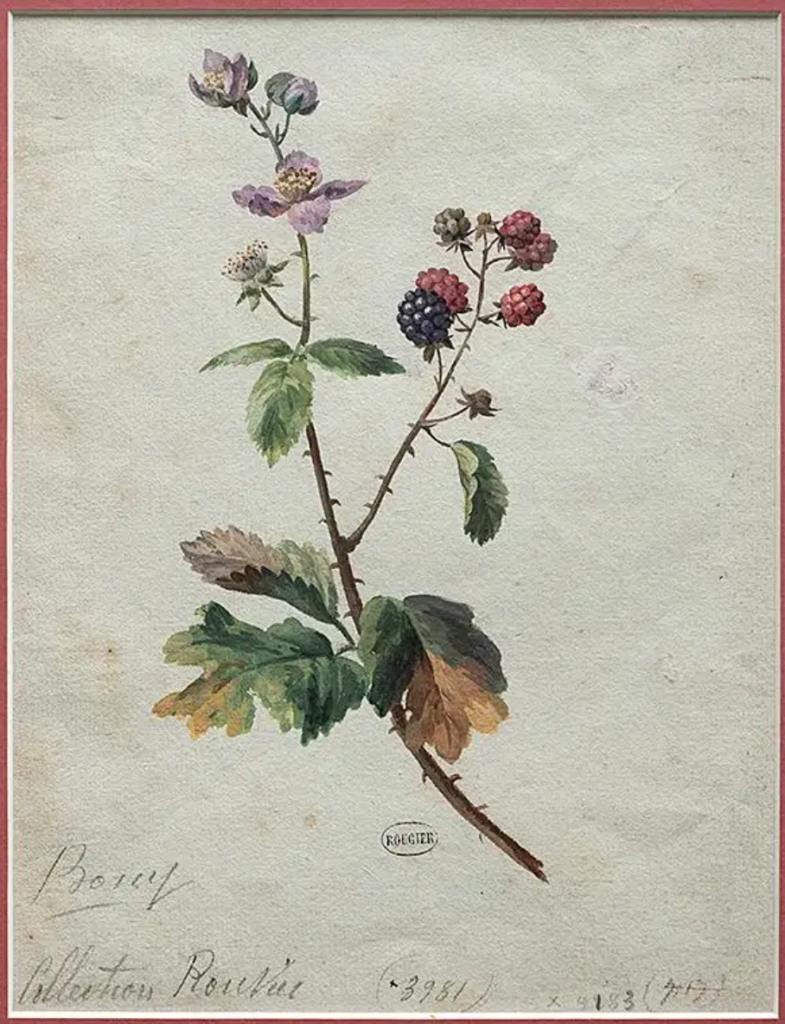Kinship: Us and Adamah

I am writing this on a Saturday afternoon with arms scratched from cutting back Himalayan blackberries. They are near merciless in their growth. Craig often jokes, “Why is my hair leaving my head but popping up in my nose, ears and eyebrows?” Brambles are like that, continually sprouting in unwanted places! This year, along with the invasive plants, we have lots of ground nests of yellow jackets scattered around the property. Finn stirred up a nest, and now, with a swollen nose and paw, has been content to spend the afternoon cuddled beside me while I write. His warmth and company soothes me as I labour.
There was something satisfying about this labour, even full of sweat and thorns and stings. It is part of caring for the land. I get to dig around to find where those invasives sprout from the ground, then cut them out, plucking sweet berries along the way. Part of caring for the Biblical witness is digging the fingers of my mind into these texts, plucking out the sweetness while cutting away invasive interpretations that distort growth and rob us of light.
We’ve been poking around in our Judeo-Christian Genesis origin stories the last few weeks, and I’ve been enamoured with a supporting character in these stories, Adamah: earth, dirt, land, soil. In these origin stories, Adamah is often mentioned. Humans and Adamah are so interconnected—Adamah is the source of human form, abundance and provision for Adam. But Adamah is also cursed, unable to provide, negatively affected, by Adam and Cain’s rash actions.
This connection between Adamah and these humans reminds me of the words attributed to Chief Seattle: “Whatever befalls the Earth befalls the sons of the Earth.” **
Mark Wallace, professor of religion at Swarthmore University, writes and researches the intersection between religious thought, indigenous studies, and post-colonialism. This week, I read his book When God was a Bird – Christianity, Animism and the Re-Enchantment of the Word. He acknowledges that when Christianity focuses on the vertical alone (a God “up there” saving individuals to a life “up there”) and fails to recognize kinship here and now—the sacred presence of God in all life and between all life—we unwittingly at best, knowingly at worst, have encouraged the exploitation of nature. However, in his book, he builds a renewed theological scaffolding, showing how the Biblical witness reveals the world as “the enfleshment of sacred power”, and “God enfleshed in all life forms”, even Adamah. “The earth is not dumb matter, an inanimate object with no capacity of feeling and sentiment, but a spirited and vulnerable living being who experiences the terrible and catastrophic loss,” he writes.
What is it like to sit with this possibility, that the very ground under our feet, the soil, is infused with the divine, and senses and responds to our presence? That the senseless killing in the world—the wars, the genocides, the bombs—have caused the land itself to suffer? What is it like to sit with the possibility that the very ground under our feet can also sense the generosity of our love and care, and is responsive to our overtures of kinship?
Deep peace and blessing,
Anne
Rev. Anne Baxter Smith
Pastor, Church at Southpoint
** Here is the quote from Chief Seattle sentence in its wider context: link.
Worship Calendar
Location & Zoom. We meet on Sundays at 15639 24 Avenue, Surrey. Zoom is offered if you cannot attend in person. Zoom link. Meeting ID: 831 1690 9977 password: 753319
Listen to Sermons
Follow “Meditations from the Church at Southpoint” on Spotify, Apple and Google
Blogs
Catch up on Anne’s recent blogs under “News” on our website, southpoint.ca
Sun May 12 Mother’s Day
Acts 1:15-17, 21-26
Sun May 19 Pentecost
Acts 2:1-21
Sun May 26
No service at the Sunnyside building
Brunches Together!
Sun Jun 2
Rev Rusty Edwards (CABF)
2 Cor 4:5-12
Sun Jun 9
2 Cor 4:13-5:1
Sun Jun 16
2 Cor 5:6-11, 14-17
Sun Jun 23
Baptisms, at A Rocha’s Brooksdale Environmental Centre No service at the Sunnyside building
Sun Jun 30
Fifth Sunday Brunches Together No service at the Sunnyside building
New to Southpoint?
At Southpoint, it all begins with God’s love. Just as a plant grows, it receives sunshine, so we grow as we receive God’s love. At Southpoint, we are growing in our capacity to love God, ourselves, one another, and creation.
We seek to be a community of grace that is intentional yet organic, spacious yet authentic, grace-filled yet accountable. * We are fully welcoming. *
We encourage relationships rather than run programs, yet we recognize the importance of intentionality and structure as we nurture life together.
As a community, we seek to put our love in action. We value helping out on Sunday mornings, sharing food, and showing up in hard times. We keep our church life simple so folk have time to build relationships with family, friends, and neighbours. We encourage folk to serve in tangible ways within the wider community. We rent space rather than own a building, allowing us to do more with less, supporting missions at home and abroad.
Curious to know more?
These six slides express what motivates our ministry (best viewed on a monitor). Here’s the bio of our Pastor, Rev. Anne Baxter Smith.
If you’d like to really peek inside, sign up for our weekly Southpoint News (scroll to brown footer at bottom of page). The Southpoint News is a MailChimp distributed email—you can unsubscribe anytime and will not be added to our contacts list. Email us at office@southpoint.ca. Website: southpoint.ca.


No comments